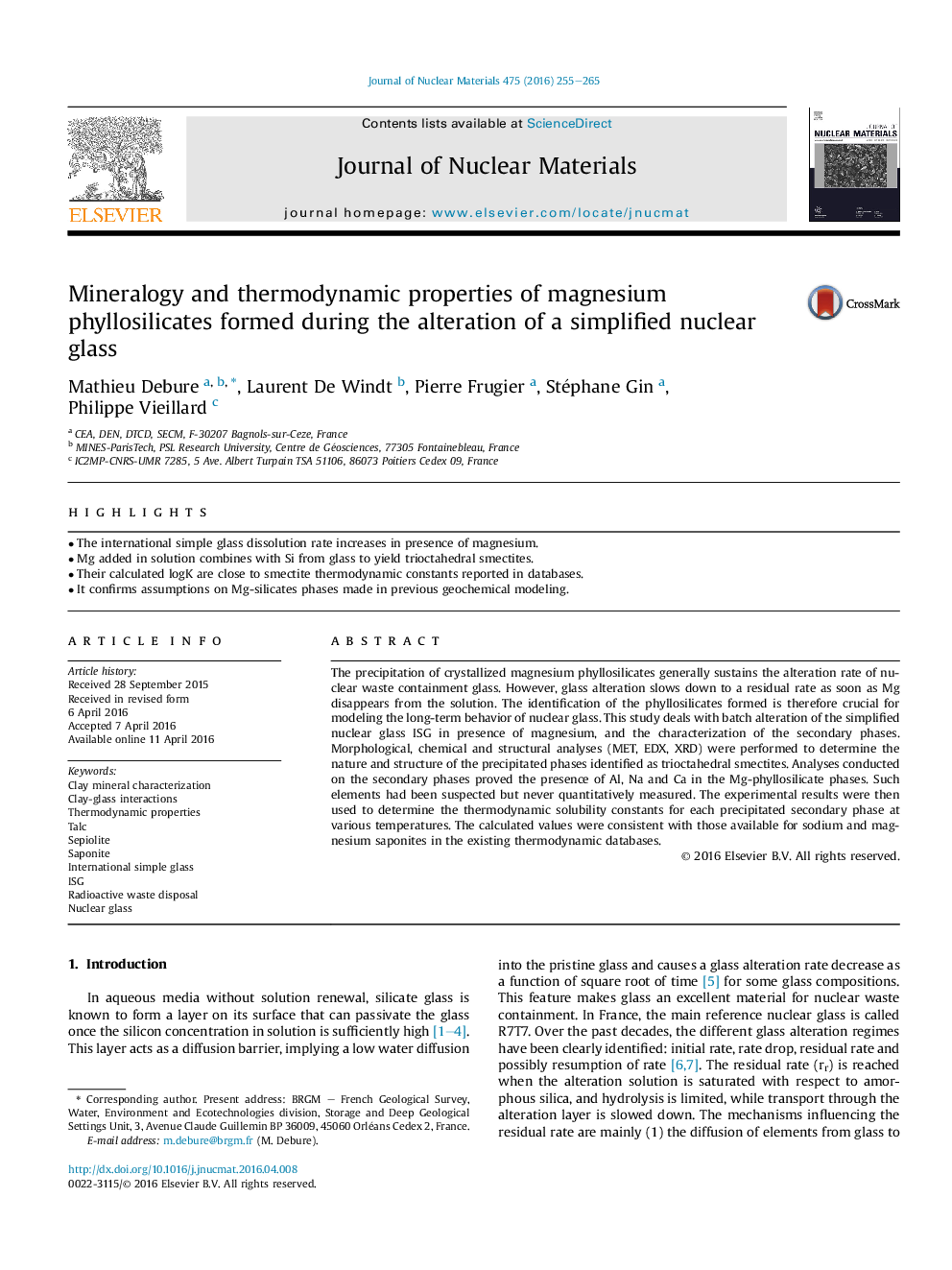| Article ID | Journal | Published Year | Pages | File Type |
|---|---|---|---|---|
| 7964288 | Journal of Nuclear Materials | 2016 | 11 Pages |
Abstract
The precipitation of crystallized magnesium phyllosilicates generally sustains the alteration rate of nuclear waste containment glass. However, glass alteration slows down to a residual rate as soon as Mg disappears from the solution. The identification of the phyllosilicates formed is therefore crucial for modeling the long-term behavior of nuclear glass. This study deals with batch alteration of the simplified nuclear glass ISG in presence of magnesium, and the characterization of the secondary phases. Morphological, chemical and structural analyses (MET, EDX, XRD) were performed to determine the nature and structure of the precipitated phases identified as trioctahedral smectites. Analyses conducted on the secondary phases proved the presence of Al, Na and Ca in the Mg-phyllosilicate phases. Such elements had been suspected but never quantitatively measured. The experimental results were then used to determine the thermodynamic solubility constants for each precipitated secondary phase at various temperatures. The calculated values were consistent with those available for sodium and magnesium saponites in the existing thermodynamic databases.
Related Topics
Physical Sciences and Engineering
Energy
Nuclear Energy and Engineering
Authors
Mathieu Debure, Laurent De Windt, Pierre Frugier, Stéphane Gin, Philippe Vieillard,
